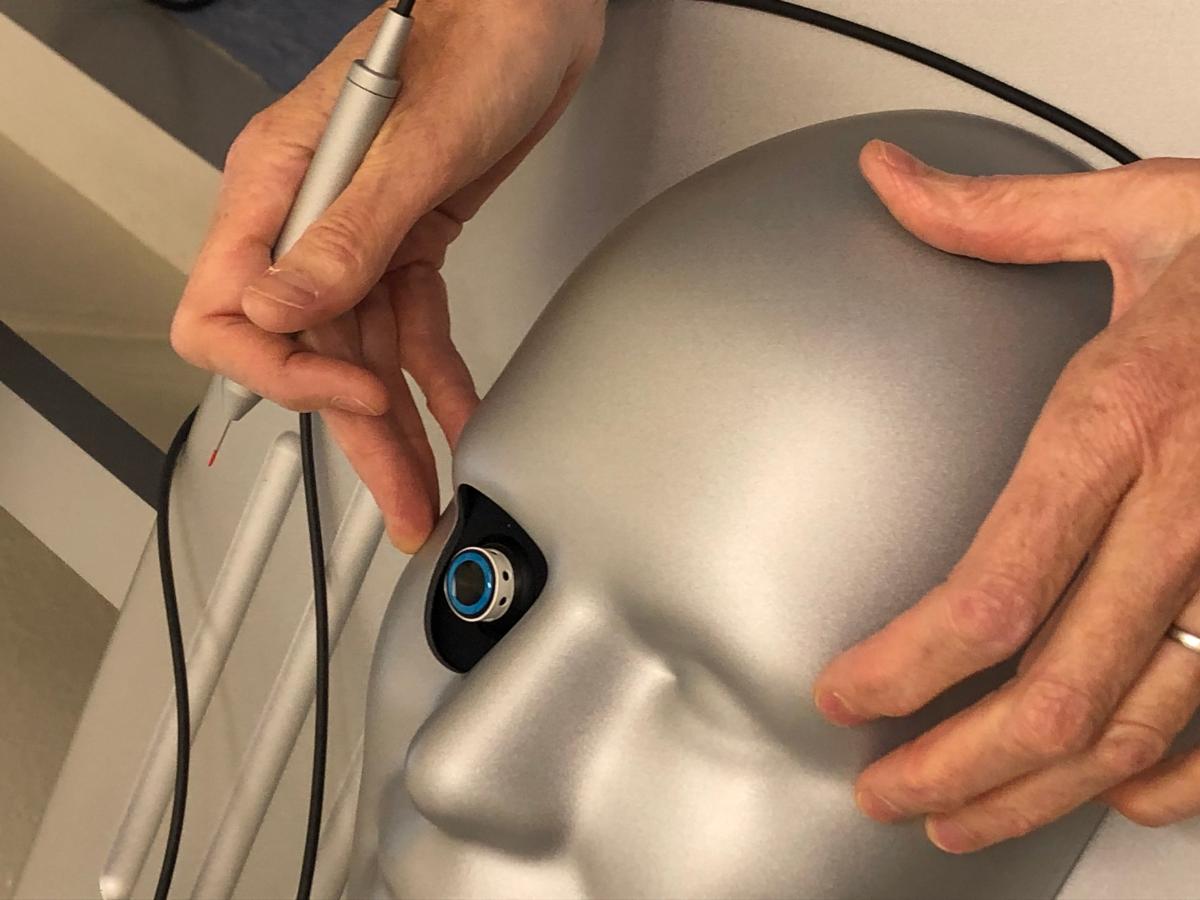"The Eyesi cataract surgical simulator has made a big difference for us"

- Ophthalmology registrar Rohan Hussain, and consultant ophthalmologist and educational supervisor, Cordelia McKechnie from the ophthalmology team at Whipps Cross talk about the impact that the tool has had on their trainees and junior ophthalmologists as well as trainees across London.
- 30 trainee ophthalmologists and aspiring ophthalmologists from North London have signed up so far for training since it became available in May 2021.
- The Eyesi surgical simulator better prepares and equips trainees when performing real-life cataract surgeries.
Since the launch of the much needed training tool in May 2021, the ophthalmology team at Whipps Cross Hospital and trainees across London has seen a number of benefits and key successes for their ophthalmology trainees and trainees across London. The surgical simulator has proven to better equip and prepare them to perform more complex cataract surgeries.
“One of our first-year speciality trainees was able to do his first cataract surgery quite early on in his first year, so that’s a good result and probably due to spending a lot of time using the simulator,” said Cordelia.
The Eyesi cataract surgical simulator is a virtual reality simulator for eye surgery training which provides an interface for cataract surgery. The simulator offers an embedded training curriculum for ophthalmology trainees along with assessment and evaluation tools.
“The confidence that the simulator gives to trainees that use it is remarkable and this ultimately has an impact on the patients as complications during surgeries are lower, and even the simulator prepares people to deal with more complex cases.”
Since the launch of the training, the ophthalmology team has had about 30 trainee opthalmologists across North London sign up to use the simulator and they have around 10 regular trainees that use it.
“We started very small, allowing our local trainees to use it but we are getting more and more trainees from North London and further afield wanting to use the simulator and we are also getting different levels of trainees,” explains Cordelia. “We get trainees that have only done the foundation training and we are also getting trainees that come from overseas and want to get back into cataract surgery so they are also using it.”
Ophthalmology registrar, Rohan Hussain has been using the Eyesi for some time and has seen a lot of benefits on his surgical development and an improved confidence when performing real life cataract surgeries.
“I used the Eyesi simulator a lot when I first started my training and it helped me to build my confidence. It gave me a better understanding of cataract surgery and the different steps involved,” he explains.
“Although there’s no substitute for real-life surgery, the simulator helps by adequately preparing you for it. There’s nothing else that would get you closer to real-life surgery on a patient.”
Rohan adds that the trainees who spend more time on the simulator seem to achieve their cataract surgery competencies quicker and these trainees are often better equipped to perform the more complex cases and deal with any complications they encounter.
“With the simulator you can also learn about the complications that can occur during cataract surgery. Complications are something you obviously want to avoid and minimise, and the good thing is they do not occur very often. The flipside of this is that we as trainees often do not get much exposure to these complications and how to best manage them. The simulator is unique in that it teaches you how to manage your own complications, should they occur,” adds Rohan.
